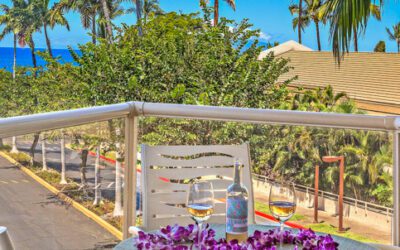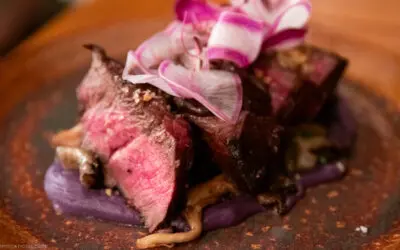There is an ‘olelo noʻeau (Hawaiian saying): “He keiki aloha nā mea kanu.” Beloved children are the plants.
It is said of Hawaiian farmers that their plants are like beloved children, receiving much attention and care.
There are stories of ancient planters giving a name to their ipu (gourd) like a child so no one would harm it. This sums up how valuable the environment, and plants in particular, are to Native Hawaiians.
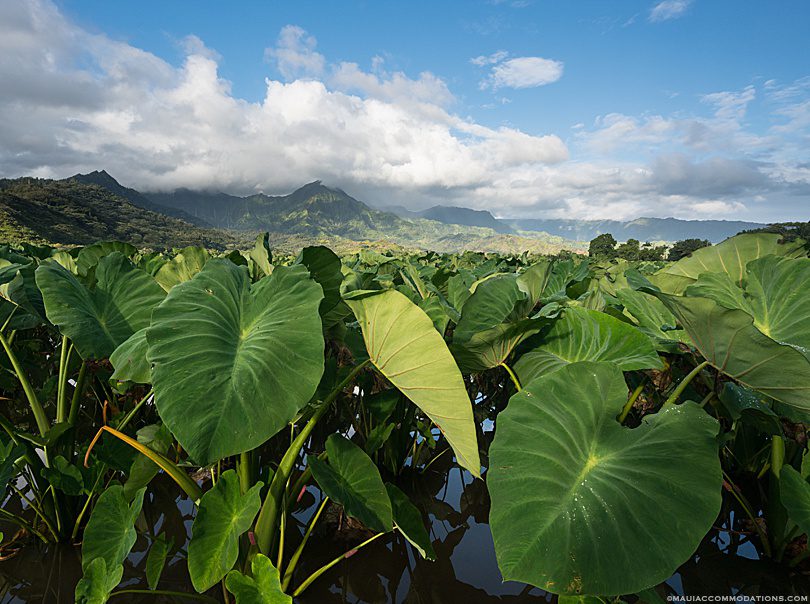
In modern-day, plants in Hawaii can be divided into the following categories:
Native Hawaiian Plants. These are plants that arrived in Hawaiʻi without the help of man.
They came here long ago in one of three ways — the three “w”s: wind, water, or wings. In the Hawaiian language, those would be the three “m”s: makani (wind), moana (ocean) and manu (bird).
Seeds, spores, roots, and cuttings were carried here on the wind or floated to the islands on the ocean currents.
“Wings” would be those seeds that a bird might have eaten and deposited here, seeds that may have gotten stuck on a bird’s feathers, and seeds embedded in the mud stuck on a bird’s feet. The three “w”s (or “m”s) also apply to the arrival of native animals and native insects.
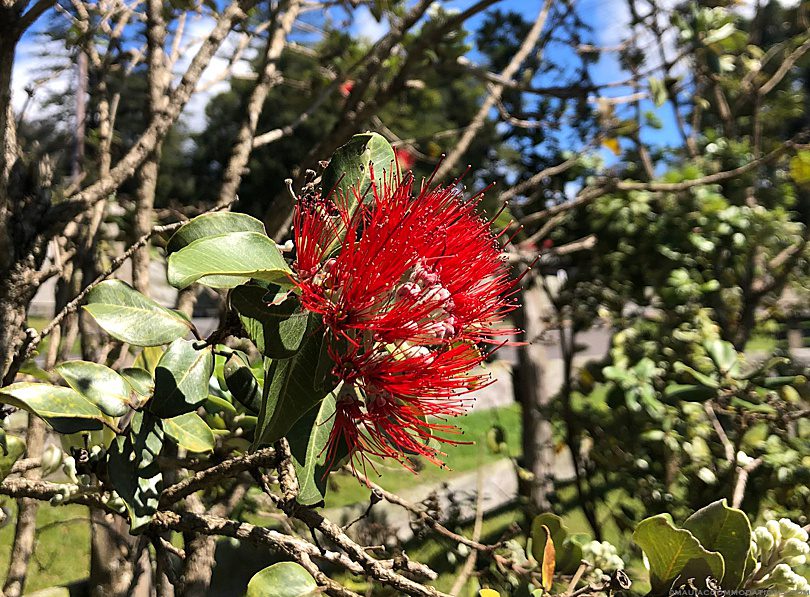
Canoe Plants. These are the plants that the first Polynesians brought to Hawaiʻi by canoe because they were highly valued for food, medicine, or utility.
Food plants are those such as kalo (taro–pictured at top of page), ‘uala (sweet potato), ‘ulu (breadfruit–pictured below), mai’a (banana) and niu (coconut).
Medicine plants might include ‘olena (turmeric) and kukui (candlenut).
Utility plants include hala or pandanus (the leaves are used for weaving mats, baskets, canoe sails and many other items), ‘ohe or bamboo (for fishing rods, house rafters and musical instruments), wauke or paper mulberry (to make cloth) and ipu or gourds (for bowls, containers, and drums).
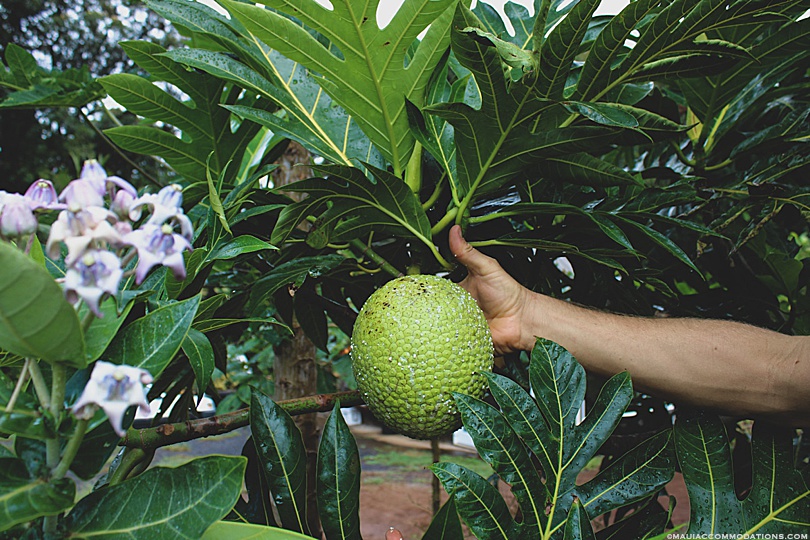
Introduced Plants. These are the majority of plants seen in Hawaiʻi today.
Many, many plants have been introduced to Hawaiʻi as food and ornamentals.
Introduced plants are not all bad, especially since we enjoy seeing and smelling their pretty flowers, having nice lawns with shade trees, and eating a wide variety of fruits and vegetables. Many introduced plants bring beauty and productivity to our land.
Plumeria (pictured below) is an example of an introduced plant. Despite being widely associated with Hawaii, plumeria is not native. The plant was brought to Hawaii by a German biologist named Dr. William Hillebrand in 1860, and today the plumeria’s fragrant blossoms are a symbol of the islands.
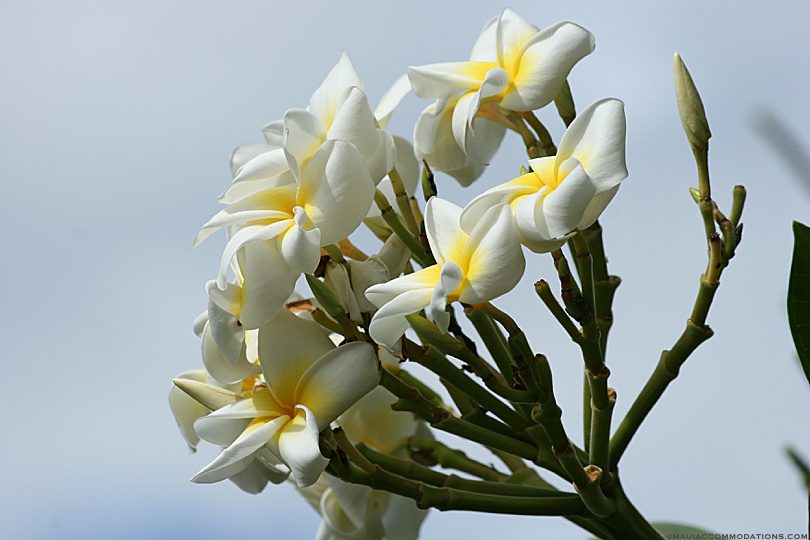
Invasive Plants. These are the introduced plants that are not good for the environment.
Invasive plants are a real problem in Hawaii. Some invasives have the potential to completely wipe out native forests and completely alter Hawaii’s natural environment.
Unfortunately, today you can see many examples of invasive plants throughout Hawaii.
One common example on Maui is the African tulip (pictured below). Many visitors admire this plant’s fiery orange blossom without realizing it’s one of the most invasive and damaging plants in Hawaii.
The African tulip was also brought to Hawaii by Dr. William Hillebrand, but the trees didn’t become widespread until the 1920s — when a team of foresters dropped tens of thousands of seeds by air, resulting in the planting of over 30,000 African tulip trees. Only years later did the tree’s invasive nature become apparent.
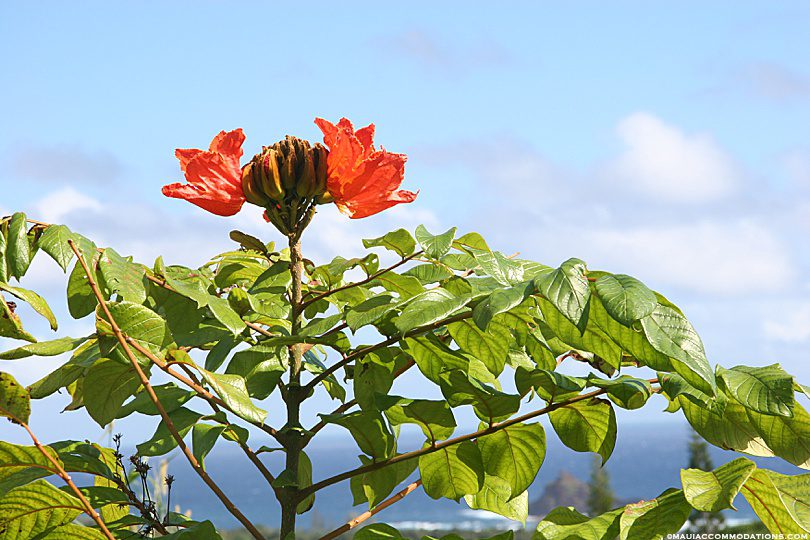
Before arriving in the islands you will be required to fill out a Hawai‘i Agriculture Declaration Form, indicating whether or not you are bringing any plant products (even fresh fruit you brought for a snack) or animals into the state.
You will also encounter agricultural inspections at Hawai‘i’s airports. Mahalo for cooperating with these inspections and restrictions, as they are an important part of the process to protect our precious environment. In this way, you can help us mālama ka ‘aina (respect/take care of the land)!
Mahalo to the Hawaiian Cultural Staff at the Ka’anapali Beach Hotel for providing this guest blog on Hawaiian culture. The Ka’anapali Beach Hotel has long been known as “Hawaii’s most Hawaiian hotel” and is highly respected for its commitment to providing an authentic Hawaiian cultural experience for its guests.
What other plants might you see in Hawaii?
Here are some of the most frequently asked questions about plants in Hawaii:
- What is the plant at Haleakala Crater?
The strange looking plant you might see growing on the slopes of Haleakala is called the Haleakala silversword.
This plant is endemic to Haleakala — meaning it is only found on Haleakala and nowhere else in the world. However, there are similar species found on the Big Island.
The Haleakala silversword is believed to have evolved from a single California tarweed seed that hitched a ride on the wind millions of years ago.
The Haleakala silversword starts out as a silvery shrub and can grow to over six feet tall. These plants can live up to 50 years, but only bloom once in their lifetime before they die. So, if you see a silversword in bloom, consider yourself lucky!
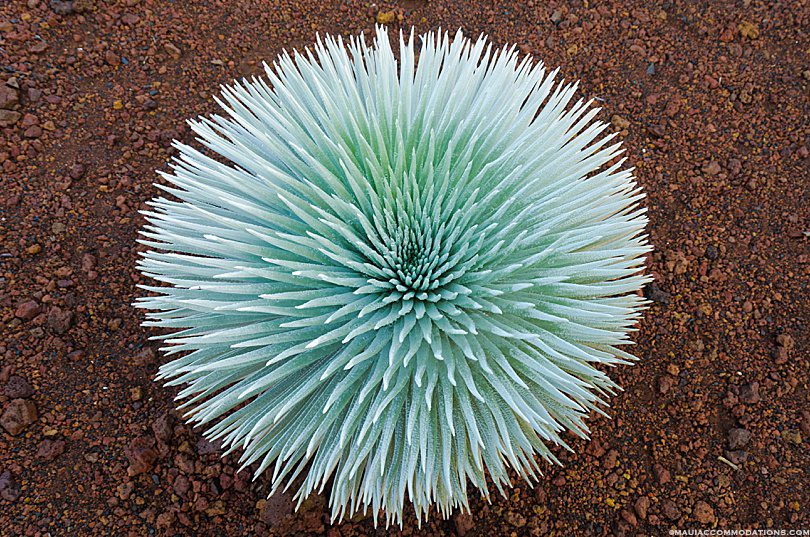
- What flowers grow in Hawaii?
A variety of botanicals grow well in Hawaii. Some of the most common flowers in Hawaii are hibiscus, plumeria, and bird of paradise.
If you visit wetter, rainforested areas, you might see red ginger or heliconia.
Head to higher elevation, and you’ll see flowers that grow in cooler weather: protea, lavender, and jacaranda.
Another flower to watch out for is the ohia lehua. This native tree produces bright puffy blossoms. The flowers are usually red, but they can also be yellow, white, or orange. Ohia is one of the most hardy native trees around, but they are a victim of a strange new fungal disease–which can kill the tree in a matter of days. If you encounter an ohia tree, it’s best not to touch it. Learn more about Rapid Ohia Death.
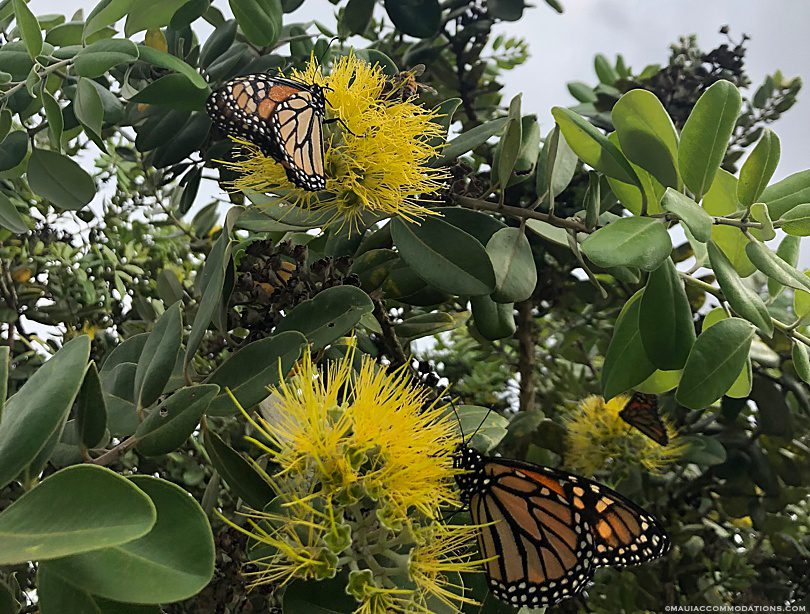
- What flowers are leis made of?
The purple flower leis that you receive at the airport or at a luau are usually made from imported orchids. Plumeria is another popular flower for lei making.
If you have a lei that smells extra good, it’s probably made from pua kenikeni or tuberose.
You can find leis made with unique flowers at specialty lei shops like Native Intelligence or Haku Maui.
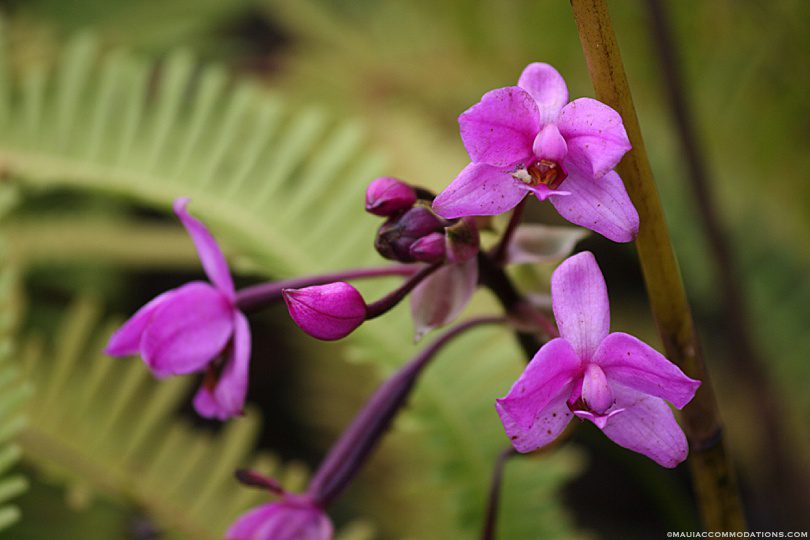
Want to learn more about native Hawaiian plants? Enjoy a tour of Maui Nui Botanical Gardens in Kahului, dedicated to preserving Maui’s native plants and cultural heritage.
Docent-led guided tours are available Tues-Thurs at 10 a.m. (by advance reservation only). You’ll learn about the natural history, conservation, and traditional uses of Hawaiian plants. Or wander the garden yourself with a brochure and audio wand designed for self-guided tours.
General Admission: $10 for non-residents. Free for residents with ID>
- Looking for great places to stay on Maui? You’ll save by BOOKING DIRECTLY with the owners/managers of these accommodations.
- Looking for Maui deals? Sign up here for our free monthly Maui Deals & Steals enewsletter with the latest book-direct deals from our advertisers.

 Aloha! Tiffany here. I've been blessed to call Maui home since 2011. With a background in the island's finest restaurants and hotels, guiding visitors to create unforgettable Maui memories is more than a skill I've mastered—it's a profound source of joy for me.
Aloha! Tiffany here. I've been blessed to call Maui home since 2011. With a background in the island's finest restaurants and hotels, guiding visitors to create unforgettable Maui memories is more than a skill I've mastered—it's a profound source of joy for me.
